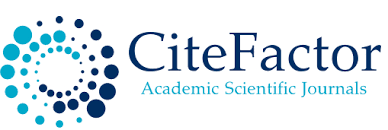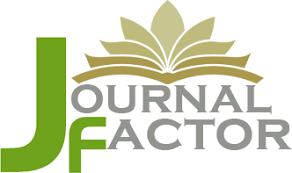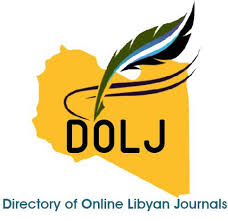Napping and its effects upon medical students’ ability to concentrate
DOI:
https://doi.org/10.54361/Abstract
Although many people are aware of how a good night’s sleep can benefit them, they do not know how taking a nap can also be advantageous. Napping also has its stigmas and is thought to be a sign of laziness, lack of ambition or only needed in children, the sick and the elderly. Catching a quick nap sometime during the course of the day leaves people feeling more energized. The purpose of this study was to determine the napping pattern of MBBS students in UniKL-RCMP and its influence on student’s ability to concentrate. We also sought to determine student’s perceptions regarding the advantages of napping. This was a descriptive study regarding napping and its effects on student’s ability to concentrate. We performed a questionnaire-based survey of MBBS students in UniKL-RCMP in October 2010. Students were randomly selected using a simple random sampling method. The questionnaire gathered information on napping habits of students, concentration ability after napping, and student’s perception regarding the advantages of napping. Almost all UniKL MBBS students nap (86.8%) and the majority of the students who nap are able to concentrate on their studies better after taking a nap (77.1%). The pattern of napping which includes duration of a nap (p = 0.000), frequency of naps per week (p = 0.008), and preference to time of day nap takes place (p = 0.026) positively and significantly influences a student’s ability to concentrate. Although most students were of the opinion that napping has no advantages (38.1), students who napped for more than 20 minutes thought napping to be very advantageous (20%). The rest thought napping to be only advantageous. With a p = 0.011, there was a statistically significant difference between duration of nap and advantages of napping. Students who napped for less than 20 minutes and were able to concentrate better after taking a nap could study for another 60 minutes afterwards whereas students who napped for more than 20 minutes could study for another 120 minutes afterwards. Students’ perceptions of the advantages and disadvantages of napping were evaluated. This study has shown that napping does have a significant positive effect on student’s ability to concentrate.
Downloads
References
National Sleep Foundation, n.d., Napping, retrieved august 15, 2010, from http://www. sleepfoundation.org/article/sleep-topics/napping
Brody JE. New respect for the nap, a pause that refreshes. January 4, 2000, retrieved august 13, 2010, from http://www.physics.ohio state.edu/~wilkins/writing/Resources/ essays/nap_ refreshs.html
Cambridge University Press, n.d., Cambridge Dictionary Online, retrieved august 15, 2010, from http://dictionary.cambridge.org/dictionary/british/nap_1
Cambridge University Press, n.d., retrieved august 15, 2010, from Cambridge Dictionary Online:
http://dictionary.cambridge.org/dictionary/british/concentration_1
Johnson E. Why do we nap and should we stop?. March 22, 2006, retrieved august 13, 2010, from http://media.www.leprovoc.com/media/storage/paper453/news/2006/03/22/ Viewpoint/ Why-Do.We.Nap.And.Should.We.Stop-1984379.shtml
Science Daily. Napping. A more effective counter measure to sleepiness in younger people, december 3, 2007, retrieved august 14, 2010, from http://www.sciencedaily.com/ releases /2007/12/071201082346.htm
LiveScience. Naps clear the mind, help you learn, february 21, 2010, retrieved august 14, 2010, from http://www.livescience.com/health/nap-brain-learning-100221.html
StatTrek, n.d., retrieved september 2010, from random number generator and random number table: http://stattrek.com/Tables/Random.aspx
Arne H and Eliasson CJ. Early to bed, early to rise! sleep habits and academic performance in college students. Sleep and Breathing 2010, 71-75.
Vgontzas SP. Daytime napping after a night of sleep loss decreases sleepiness, improves performance, and causes beneficial changes in cortisol and interleukin-6 secretion. Am J Physiol Endocrinol Metab 2007, E253-261.
Lahl O. An ultra short episode of sleep is sufficient to promote declarative memory performance. J Sleep Res. 2008, 17: 3-10
Vela-Bueno A. Sleep and behavioral correlates of napping among young adults: a survey of first-year university students in madrid, Spain. J Am College Health. 2008, 150-158.
Cote CE. Benefits of napping in healthy adults: impact of nap length, time of day, age and experience with napping. J Sleep Res. 2009, 272- 81.
Tietzel AJ and Lack LC. The recuperative value of brief and ultra-brief naps on alertness and cognitive performance. J Sleep Res. 2002, 11: 213-18.
Dhand R. Good sleep, bad sleep! The role of daytime naps in healthy adults. Curr Opin Pulmonary Med. 2006, 12; 6: 379-382
Brooks A and Lack L. A brief afternoon nap following nocturnal sleep restriction: which nap duration is most recuperative? Sleep. 2006, 29; 6: 831-840.
Hayashi M. Motoyoshi N. and Hori T. Recuperative power of a short daytime napwith or without Stage 2 sleep. Sleep. 2005, 829-836.
Milner CE, Fogel SM and Cote KA. Habitual napping moderates motor performance improvements following a short daytime nap. Biol. Psychol. 2006, 73; 2: 141-156.
Takahashi M. and Arito H. Maintenance of alertness and performance by a brief nap after lunch under prior sleep deficit. Sleep. 2000, 23: 1-7.
Downloads
Published
Issue
Section
License
Copyright (c) 2014 Than Than Htwe, Sabaridah Binti Ismail, Khin Darli Tun, Peela Jagannadha Rao (Author)

This work is licensed under a Creative Commons Attribution-NonCommercial-NoDerivatives 4.0 International License.
Open Access Policy
Libyan journal of medical Research (LJMR).is an open journal, therefore there are no fees required for downloading any publication from the journal website by authors, readers, and institution.
The journal applies the license of CC BY (a Creative Commons Attribution 4.0 International license). This license allows authors to keep ownership f the copyright of their papers. But this license permits any user to download , print out, extract, reuse, archive, and distribute the article, so long as appropriate credit is given to the authors and the source of the work.
The license ensures that the article will be available as widely as possible and that the article can be included in any scientific archive.
Editorial Policy
The publication of an article in a peer reviewed journal is an essential model for Libyan journal of medical Research (LJMR). It is necessary to agree upon standards of expected ethical behavior for all parties involved in the act of publishing: the author, the journal editorial, the peer reviewer and the publisher.
Any manuscript or substantial parts of it, submitted to the journal must not be under consideration by any other journal. In general, the manuscript should not have already been published in any journal or other citable form, although it may have been deposited on a preprint server. Authors are required to ensure that no material submitted as part of a manuscript infringes existing copyrights, or the rights of a third party.
Authorship Policy
The manuscript authorship should be limited to those who have made a significant contribution and intellectual input to the research submitted to the journal, including design, performance, interpretation of the reported study, and writing the manuscript. All those who have made significant contributions should be listed as co-authors.
Others who have participated in certain substantive aspects of the manuscript but without intellectual input should only be recognized in the acknowledgements section of the manuscript. Also, one of the authors should be selected as the corresponding author to communicate with the journal and approve the final version of the manuscript for publication in the LJMR.
Peer-review Policy
- All the manuscripts submitted to LJMR will be subjected to the double-blinded peer-review process;
- The manuscript will be reviewed by two suitable experts in the respective subject area.
- Reports of all the reviewers will be considered while deciding on acceptance/revision or rejection of a manuscript.
- Editor-In-Chief will make the final decision, based on the reviewer’s comments.
- Editor-In-Chief can ask one or more advisory board members for their suggestions upon a manuscript, before making the final decision.
- Associate editor and review editors provide administrative support to maintain the integrity of the peer-review process.
- In case, authors challenge the editor’s negative decision with suitable arguments, the manuscript can be sent to one more reviewer and the final decision will be made based upon his recommendations.














